Welcome to our blog! Are you interested in maximizing profits and improving the operations of your fish farm? Look no further because we have got you covered. This article will delve into the fascinating world of fish farm operations management and provide a month-wise maintenance guide that can significantly boost your profits. Managing a fish farm is a challenging task. It requires careful planning, strategic thinking, and a deep understanding of the needs and behaviors of different fish species.
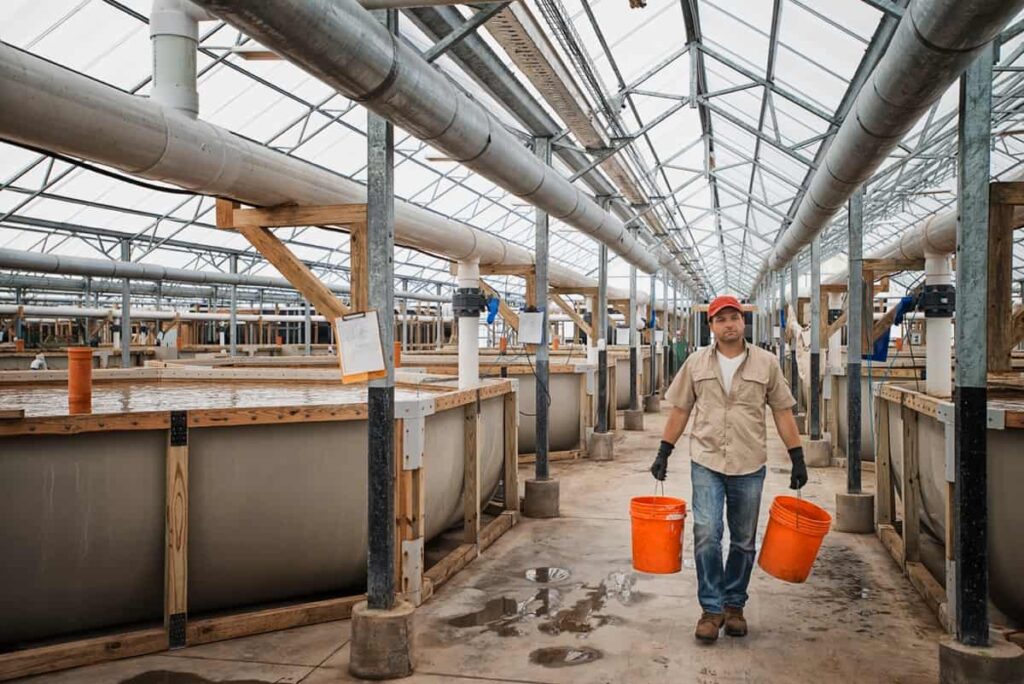
By implementing a well-structured maintenance schedule, you can ensure the smooth running of your farm throughout the year. Not only will this guide help you streamline your operations, but it will also increase the overall profitability of your fish farm. By staying ahead of maintenance requirements, you can prevent potential issues from arising and avoid costly setbacks.
What is Fish Farm Operations Management?
Fish Farm Operations Management systematically and efficiently manages fish farm activities. It encompasses a range of tasks such as fish breeding, feeding, water quality management, disease prevention, harvesting, and marketing. Approaches to optimize fish production, ensure the well-being of the fish, and maximize profitability. Proper operations management can significantly impact fish growth, survival, and farm productivity.
For example, optimizing feeding regimes based on nutritional requirements and monitoring water quality parameters like dissolved Oxygen, pH, and temperature can enhance fish health and performance. By implementing effective operations management strategies, fish farmers can increase production efficiency, reduce production costs, and maintain sustainable practices, ultimately leading to improved profitability and a thriving fish farm.
Management Operations, Measures, and Strategies in Fish Farm Maintenance
Management Plans: A management plan is a formal or informal arrangement between a fisheries management authority and interested parties. It identifies the partners in the fishery, their roles, and the agreed objectives for the fishery. The plan also specifies the management rules, regulations, and other relevant details. Developing a well-formulated management plan for each fishery is crucial, as stated in the Code of Conduct.
Management Strategies: Management strategies are the sum of all the management measures selected to achieve the biological, ecological, economic, and social objectives of a fishery. While a single-species fishery may have a strategy consisting of a single management measure, most strategies involve multiple measures such as technical, input and output controls, and user rights. It is important to strike a balance to ensure the strategy is effective but manageable, making compliance and enforcement difficult.
In case you missed it: A Guide to Sustainable RAS Fish Farming Practices
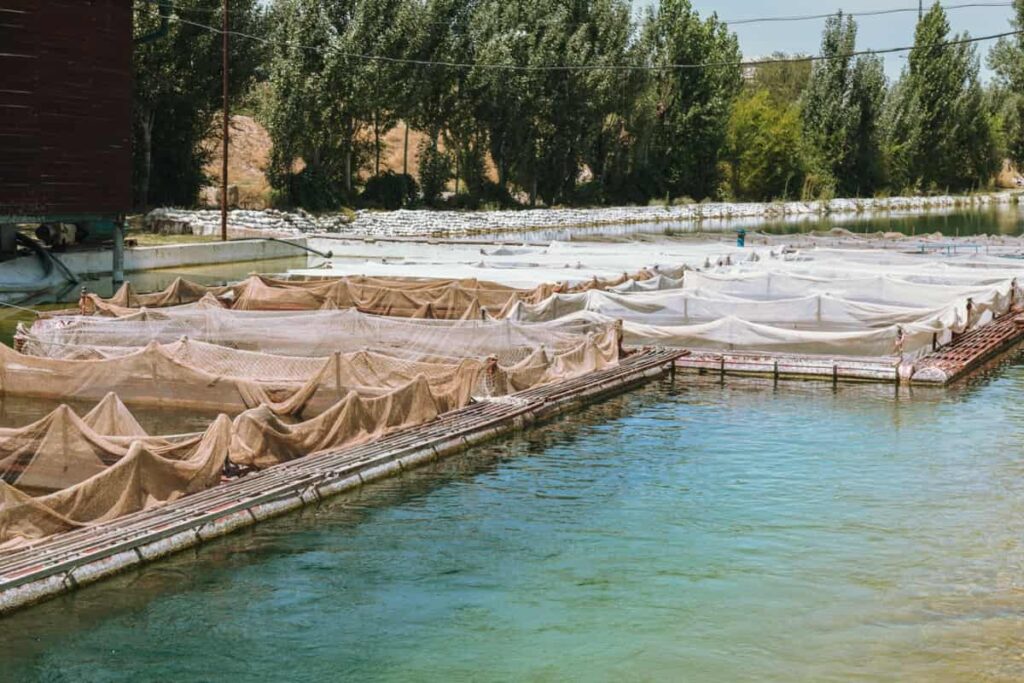
Management Measures: Management measures are the smallest units in the fishery manager’s toolkit. They are implemented to contribute to achieving the fishery’s objectives. These measures include technical measures (regulations on gear and closed areas/seasons), input controls (effort limitations), output controls (catch limits), and access rights designed around these controls.
Biological Considerations: Fisheries management aims to maintain fishing mortality at a level that the population can withstand without harm to sustainability and productivity. This requires maintaining the population above a certain abundance or biomass and preserving the age structure for adequate reproduction and recruitment. Additionally, selective fishing can reduce genetic diversity, affecting the population’s production potential and resilience to environmental changes. Managers must be aware of these risks and avoid maintaining selective pressures for an extended period.
Ecological and Environmental Considerations: Fish populations are part of complex ecosystems, and interactions with other species and environmental factors influence their abundance and dynamics. Variability in population dynamics, caused by environmental changes, affects fish availability to fishing gear and the interpretation of catch data.
Fisheries management should consider both natural and human-induced changes in the ecosystem, such as habitat destruction or the impact of fishing on the physical and chemical environment. Measures should be implemented to minimize negative impacts and maintain the overall balance of the ecosystem.
Technological Considerations: Fisheries managers have limited direct control over fish populations. Their main mechanism for ensuring sustainability is regulating the quantity, timing, and size of catches, along with efforts allowed in the fishery. However, there are challenges in monitoring catch controls accurately, estimating fishing efforts, and dealing with technological advancements that increase fishing efficiency. Managers must navigate these constraints and uncertainties to implement effective fishery measures.
Requirements for Fish Farm Pond Construction
Criteria of Site Selection for Fish Farm Pond
- Choose land with high water-holding capacity.
- Avoid highly alkaline or acidic land.
- Low-lying areas are preferable.
- The site should have a reliable water supply.
- Construct well-built outlets and inlets for proper water circulation.
- Ensure the site is easily accessible via road or path.
- Select a location away from flood-prone areas.
In case you missed it: Sustainable Fish Farming: Zero Waste Fish Farming Practices
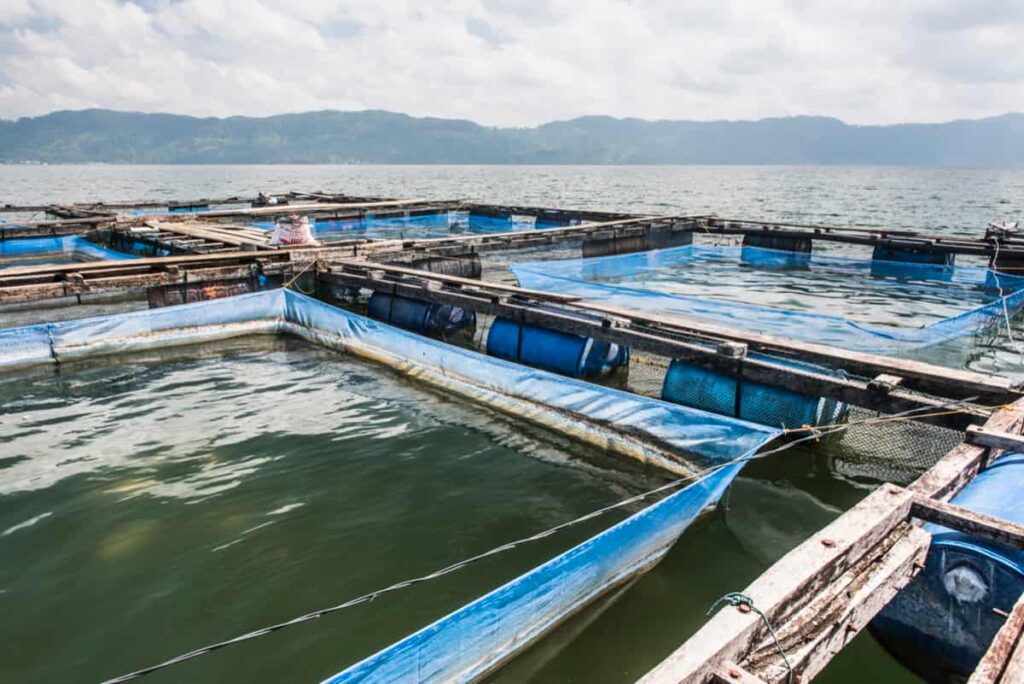
Permissible Parameters of Soil & Water: Soil for Fish Farm Pond
| Sand (%) | 40 |
| Silt (%) | 20 |
| Clay (%) | 40 |
| Organic carbon (%) | 0.5-2.0 |
| Available Nitrogen (mg/100gm) | 20-75 |
| Available Phosphorus (mg/100gm) | 2-10 |
Water Conditions and Parameters for Fish Farm Pond
| Color | Light Green |
| Temperature (Degree Celsius) | 25-35 |
| Transparency (cm) | 30-40 |
| pH | 7.0-8.6 |
| Dissolved Oxygen (mg/L) | 4-10 |
| Carbon Dioxide (mg/L) | 3-7 |
| Total Alkalinity (mg/L) | 60-230 |
| Total Nitrogen (mg/L) | 0.05-1.5 |
| Phosphorus (mg/L) | 0.05-7.0 |
| Salinity (ppt) | <5 |
| Ammonia (ppm) | 0-0.1 |
| Calcium (ppm) | 75-150 |
| Chlorine (ppm) | <0.003 |
| Total Dissolved Solids (ppm) | <80 |
| Potassium (ppm) | 0.5-10 |
| Iron (ppm) | 0.3-10 |
Time Scheduling for Fish Culture in Farm Pond and Operations Management
| Identification of site | 10 days |
| Formulation of Project | 30 days |
| Training in Fish Farming | 15 days |
| Construction/Renovation of Pond | 45 days |
| Stocking Management | 18 days |
| Soil and Water Analysis | Quarterly, with additional analysis after 60 days of seed in the pond |
| Sale of Fingerlings | 30 days after Stocking of seed |
| Trial Netting | Monthly |
| Partial Harvesting | After 150-180 days of Stocking |
| Final Harvesting & Marketing | After 250-260 days of Stocking |
Following this schedule allows for proper planning and execution of each activity, leading to optimal fish growth and profitability. Regular monitoring and analysis of soil and water conditions help maintain a healthy environment for the fish.
In case you missed it: Fish Hatchery Business Plan: How to Start, Cost, Profits, and a Great Way to Make Money
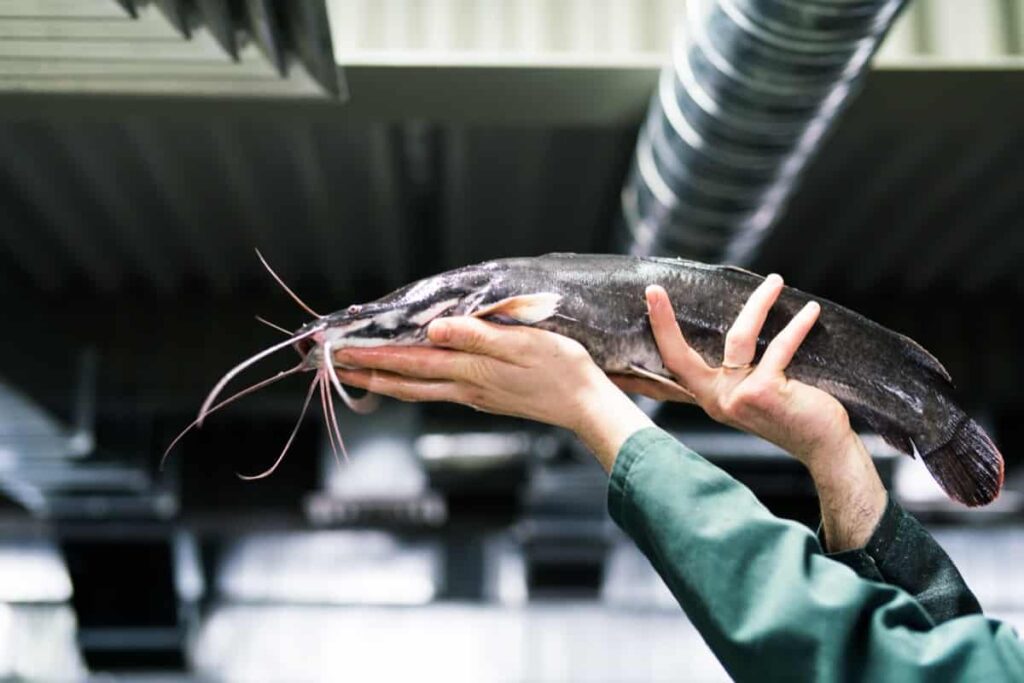
General and Best Fish Farm Operations, Activities, and Maintenance Practices
Water Quality Management: Water quality is essential for fish health and growth. Proper monitoring and management of parameters such as dissolved oxygen levels, pH, temperature, ammonia, and nitrate levels are crucial. Regular water testing, adequate aeration, and proper waste management are important for optimal water conditions.
Pond Preparation and Construction: Proper pond preparation and construction are key to successful fish farming. The pond should be constructed in a suitable location with access to a reliable water source. The minimum pond size for a profitable operation is 10m x 10m x 1.5m.
A typical pond should have an inlet for water entry fixed with wire mesh to keep out undesired native fauna and an outlet for surplus water to keep stocked species in. It should have proper drainage facilities designed to prevent water stagnation and flooding. Pond size, depth, and shape should be appropriate for the targeted fish species.
Stocking and Feeding: Careful consideration should be given to stocking density and selecting healthy fingerlings or juveniles from reliable sources. Judicious species selection, including mirror carp, grass carp, and silver carp, in the recommended ratio of 3:2:1, along with a stocking rate of 15,000 fingerlings per hectare, artificial feeding, and careful timing of stocking after manuring, contribute to successful fish farming in sub-temperate regions.
Feeding practices should be based on the specific nutritional requirements of the fish species. Providing a balanced and appropriate diet, monitoring feeding rates, and avoiding overfeeding is crucial for growth and minimizing environmental impacts.
Disease Prevention and Biosecurity: Implementing biosecurity measures is essential to prevent, control, and manage the introduction and spread of diseases. Regular health checks, quarantine protocols for new fish introductions, and hygiene and sanitation practices are important. Vaccination, if available for the targeted species, can be considered as part of disease prevention strategies.
Harvesting and Marketing: Timing the harvest correctly ensures optimal fish size and market value. Proper handling techniques should be followed during harvesting to minimize disease stress and damage to the fish. Adequate facilities for sorting, grading, and transporting the harvested fish to the market should be available.
Record-Keeping and Financial Management: Maintaining accurate production, expenses, and sales records is important for effective farm management. It helps evaluate profitability, identify improvement areas, and make informed decisions. Financial management practices such as cost analysis, budgeting, and market research contribute to the overall success of the fish farming operation.
Environmental Sustainability: Fish farming should be carried out in an environmentally responsible manner. Implementing practices that minimize environmental impacts, such as proper waste management, reducing water and energy consumption, and protecting natural habitats, contribute to the farm’s and surrounding ecosystems’ long-term sustainability.
In case you missed it: How to Start Polyculture Fish Farming In India: Composite Fish Culture, Mixed Fish Farming Examples, Benefits, and Disadvantages
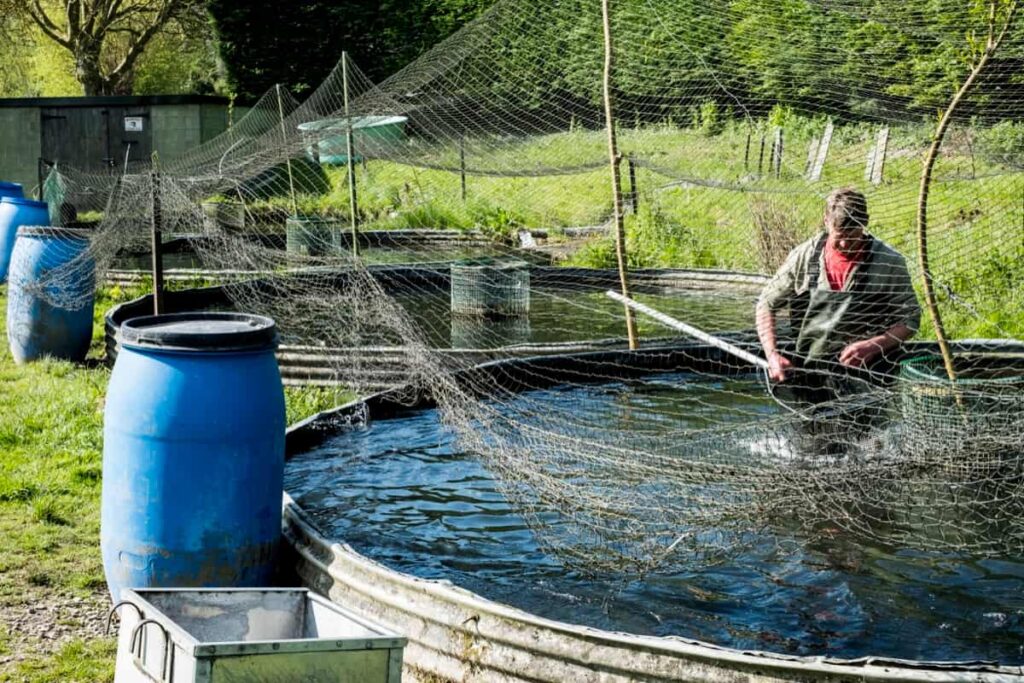
Fish Farm Operations and Maintenance Activities for Better Profits
January Month Operations and Maintenance Activities
- Evaluate the previous year’s performance, assess production goals, and plan for the upcoming year.
- Conduct water quality tests and make necessary adjustments to maintain optimal conditions for fish growth.
- Inspect and maintain equipment, including pumps, filters, and aerators.
- Prepare for breeding season by ensuring spawning areas are clean and ready.
- Monitor fish health and implement disease prevention measures.
February Month Operations and Maintenance Activities
- Begin the breeding season by introducing broodstock to spawning areas.
- Monitor water temperature and make adjustments as needed to stimulate spawning.
- Collect and fertilize eggs, and transfer them to incubation tanks.
- Monitor water parameters closely to maintain optimal conditions for egg development.
- Implement feeding regimes to support the nutritional needs of broodstock and growing fish.
March Month Operations and Maintenance Activities
- Monitor egg development and maintain proper water flow and oxygen levels in incubation tanks.
- Inspect and maintain incubation systems, including water filtration and temperature control.
- Prepare nursery tanks for hatching larvae.
- Implement feeding schedules for newly hatched fish larvae.
- Conduct regular water quality tests and make necessary adjustments.
April Month Operations and Maintenance Activities
- Continue monitoring the development of fish larvae and adjust feeding regimes accordingly.
- Maintain appropriate water flow and temperature in the nursery tanks.
- Conduct regular water exchanges and monitor water quality parameters.
- Implement disease prevention measures, including vaccination if required.
- Prepare grow-out tanks for the transfer of fingerlings.
May Month Operations and Maintenance Activities
- Transfer fingerlings to grow-out tanks and monitor their growth and health.
- Implement appropriate feeding schedules and adjust feed formulations as fish size increases.
- Monitor water quality parameters and make necessary adjustments.
- Conduct routine maintenance on tanks, nets, and other equipment.
- Monitor fish behavior and identify any signs of stress or disease.
June Month Operations and Maintenance Activities
- Monitor fish growth and adjust feeding rates to support optimal growth.
- Monitor water temperature and oxygen levels, especially during hot weather.
- Conduct routine maintenance on aeration systems and water filters.
- Monitor and control aquatic weeds and pests.
- Conduct periodic fish health assessments and implement necessary treatments.
July Month Operations and Maintenance Activities
- Continue monitoring fish growth and adjust feeding regimes accordingly.
- Monitor water quality parameters and make necessary adjustments.
- Conduct regular netting to assess fish health and size distribution.
- Conduct routine maintenance on tanks, pumps, and other equipment.
- Monitor predator activity and implement appropriate deterrents if necessary.
In case you missed it: Common Fish Diseases, Symptoms, and Treatment: Check How this Guide Helps Fish Farmers
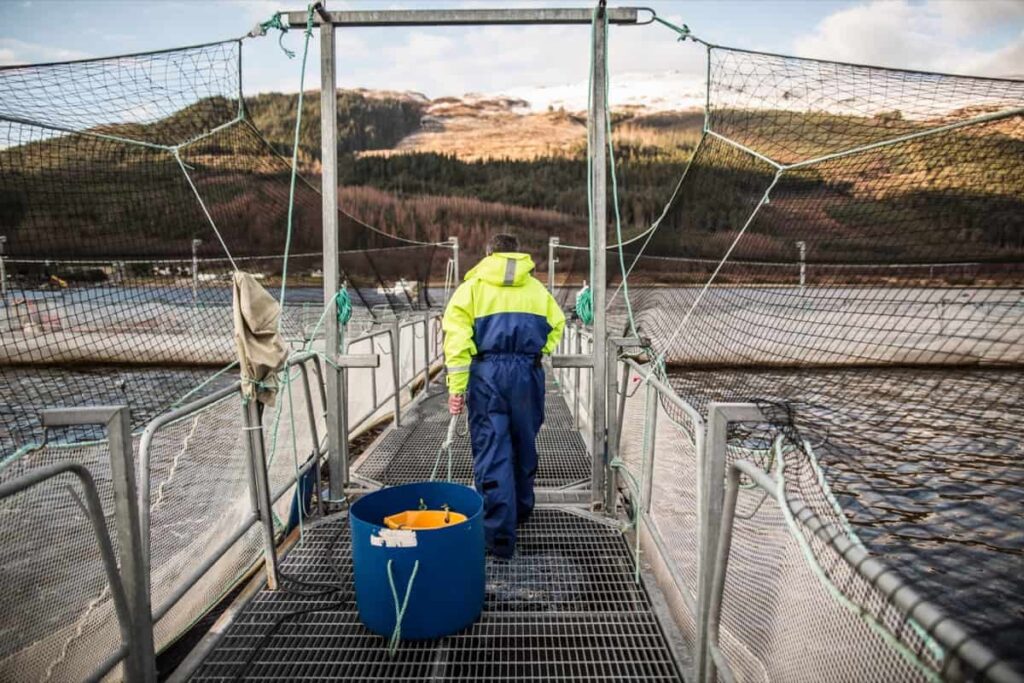
August Month Operations and Maintenance Activities
- Monitor fish growth and adjust feeding rates as fish approach market size.
- Conduct routine maintenance on water circulation systems.
- Monitor and manage algae blooms and water clarity.
- Implement disease prevention measures, including regular health checks and treatments.
- Monitor market demand and plan for fish harvest.
September Month Operations and Maintenance Activities
- Planned and execute fish harvest, ensuring proper handling and transportation to market.
- Clean and disinfect grow-out tanks after harvest.
- Conduct water quality tests and adjust parameters as needed.
- Evaluate the season’s performance and make necessary adjustments for the following year.
- Update farm records and financial analysis.
October Month Operations and Maintenance Activities
- Conduct maintenance on infrastructure, including tanks, ponds, and fences.
- Repair and upgrade equipment as needed.
- Conduct soil analysis and prepare ponds for future Stocking.
- Develop and review business plans and budgets.
- Explore marketing opportunities and establish relationships with buyers.
November Month Operations and Maintenance Activities
- Prepare for the next breeding season by assessing broodstock health and availability.
- Conduct routine maintenance on pumps, aerators, and other equipment.
- Conduct water quality tests and make necessary adjustments.
- Review and update farm management protocols and standard operating procedures.
- Conduct training sessions for farm staff.
December Month Operations and Maintenance Activities
- Conduct year-end assessments, including financial analysis and performance evaluation.
- Plan and order necessary supplies for the upcoming year.
- Develop marketing strategies for the next season’s fish production.
- Conduct maintenance on infrastructure and equipment during the off-season.
- Attend industry conferences and workshops to stay updated on the latest trends and techniques.
Conclusion
Implementing month-wise maintenance practices in fish farm operations management is essential for maximizing profits. By following a systematic approach and addressing specific tasks throughout the year, such as Stocking, feeding, water quality management, and disease prevention, fish farmers can ensure optimal growth, health, and productivity, leading to better financial outcomes.
- Management Pests and Diseases in Your Cotton Field
- Sheep Farming Business Plan for Beginners
- Aquaponic Farming at Home: A Step-By-Step Guide
- Profitable Village Farming Business Ideas in 2024
- High-Yield Aquaculture: Fast-Growing Fish for Farming
- Effective Fish Pond Construction Techniques for Beginners
- Irrigation and Water Management in Pineapple Farming
- Blossom to Harvest: Mastering Flowering and Pollination in Papaya Farming
- Pig Fattening Essentials: From Selection to Sale for Beginners
- Raising Wagyu Cattle: A Complete Guide for Premium Beef Production
- Soil Types and Their Water Holding Capacity
- Optimizing Irrigation Schedules for Coconut Groves for Enhanced Yield
- Espresso Your Garden: Coffee Grounds for Healthier Acid-Loving Plants
- The Best Soil Mix for Snake Plants: How to Mix Your Own Snake Plant Soil
- Green Thumb Success: Expert Tips for Cultivating Greenhouse Beans All Year Round
- Bloom All Year Round: The Ultimate Guide to Indoor Hyacinth Care
- Eco-Friendly Gardening: How to Make Liquid Fertilizer from Kitchen Waste
- Ultimate Guide to Grow Anise in Pots: Explore Seed Propagation to Harvesting
- Guide to Raising Chester White Pigs: Discover Breed Facts to Growth Management
- Mastering the Elegance: The Ultimate Guide to Weeping Cherry Tree Care, Planting, and Maintenance
- Ultimate Guide to Planting Garlic in Grow Bags: Growing Strategies for Beginners
- How to Fix Spider Plant Leaf-Related Problems: Natural and Organic Remedies
- 10 Reasons Why Your Tulsi Plant is Shedding Leaves: Home Remedies and Solutions
- Optimizing Growth and Yield: The Advantages of Palm Bunch Ash Fertilizer
- Utilizing Neem Oil Extract as a Natural Pesticide for Hydrangea
- From Soil to Harvest: Various Ways in Which Farmers Can Use AI Tools
- Steps to Encourage and Induce Citrus Flowers: A Comprehensive Guide
- How to Fix Snake Plant Leaf-Related Issues: Natural and Organic Remedies
- Transform Your Garden into a Fragrant Oasis with Raat Ki Rani (Night Blooming Jasmine)
- Discover the Ideal Chicken Breeds for Philippine Farms
- How to Create a Poultry Egg Farm Business Plan for Profits
- Grow Lemon Cucumbers Like a Pro: Insider Techniques for Bountiful Yields
- Ultimate Guide to Caring for Your Pink Princess Philodendron: Tips for Thriving Variegation
- Areca Nut Profit Per Acre: Calculating Yield and Cost of Cultivation
- How Kaveri Chicken is Becoming a More Profitable Breed in Indian Backyards
- Transform Your Barn: 9 Steps to Convert a Horse Stall into a Chicken Coop
